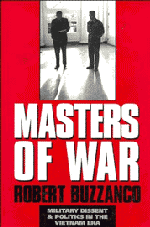Book contents
- Frontmatter
- Contents
- Acknowledgments
- List of Abbreviations
- 1 Introduction: Losing Battles and Winning Wars
- 2 Prologue to Tragedy: U.S. Military Opposition to Intervention in Vietnam, 1950–1954
- 3 Preparing for and Avoiding War: Military Affairs and Politics in Vietnam and the United States, 1955–1960
- 4 Pinning Down the President: JFK, the Military, and Political Maneuvering over Vietnam, January-October 1961
- 5 The Best and Worst of Times: The U.S. War against Vietnam, October 1961–November 1963
- 6 “Seeing Things Through in Vietnam”: LBJ, the Military, and the Growing U.S. Commitment to Vietnam, November 1963-December 1964
- 7 Hope for the Best, Expect the Worst: U.S. Ground Troops Enter the Vietnam War, January-July 1965
- 8 War on Three Fronts: U.S. Forces versus the Viet Cong, Westmoreland versus the Marines, and Military Leaders versus the White House, July 1965-December 1966
- 9 “The Platform of False Prophets Is Crowded”: Public Hope and Private Despair in Vietnam, 1967
- 10 The Myth of Tet: Military Failure and the Politics of War
- 11 Conclusion: Bringing It All Back Home
- Epilogue: “This Is a Real War”: Military Dissent and Politics after Vietnam
- Bibliography
- Index
3 - Preparing for and Avoiding War: Military Affairs and Politics in Vietnam and the United States, 1955–1960
Published online by Cambridge University Press: 05 August 2012
- Frontmatter
- Contents
- Acknowledgments
- List of Abbreviations
- 1 Introduction: Losing Battles and Winning Wars
- 2 Prologue to Tragedy: U.S. Military Opposition to Intervention in Vietnam, 1950–1954
- 3 Preparing for and Avoiding War: Military Affairs and Politics in Vietnam and the United States, 1955–1960
- 4 Pinning Down the President: JFK, the Military, and Political Maneuvering over Vietnam, January-October 1961
- 5 The Best and Worst of Times: The U.S. War against Vietnam, October 1961–November 1963
- 6 “Seeing Things Through in Vietnam”: LBJ, the Military, and the Growing U.S. Commitment to Vietnam, November 1963-December 1964
- 7 Hope for the Best, Expect the Worst: U.S. Ground Troops Enter the Vietnam War, January-July 1965
- 8 War on Three Fronts: U.S. Forces versus the Viet Cong, Westmoreland versus the Marines, and Military Leaders versus the White House, July 1965-December 1966
- 9 “The Platform of False Prophets Is Crowded”: Public Hope and Private Despair in Vietnam, 1967
- 10 The Myth of Tet: Military Failure and the Politics of War
- 11 Conclusion: Bringing It All Back Home
- Epilogue: “This Is a Real War”: Military Dissent and Politics after Vietnam
- Bibliography
- Index
Summary
Strategy has become a more or less incidental by-product of the administrative processes of the defense budget.
Maxwell Davenport TaylorFrom the Collins mission and Diem's successful response to the sect crisis in April and May 1955 to the end of the Eisenhower presidency, Vietnam was not a primary concern to U.S. policy makers, who focused their attentions instead on areas of greater importance such as Europe, Japan, China, and the Middle East. Nevertheless, after the Geneva partition of Vietnam, the creation of SEATO, and the establishment of a U.S. Army training mission to Vietnam, the American commitment to Diem was unmistakable and irrevocable. As a result, America's military leaders began to take a more optimistic approach to affairs in Vietnam, apparently reversing their earlier views about the dangers of war in Indochina.
These appearances were somewhat deceptive, however; the change in military thinking was not as profound as it seems at first glance. To be sure, the new MAAG commander, General Samuel Williams, was as optimistic and deaf to criticism as his predecessor, O'Daniel, had been. Williams ignored both Diem's repressive ways and the need to train the southern Vietnamese army to fight a guerrilla war. With U.S. acquiescence, Diem organized his army not to fight the Communist enemy so much as to maintain his own authority. Other military leaders, however, continued to debate military policy in Vietnam.
- Type
- Chapter
- Information
- Masters of WarMilitary Dissent and Politics in the Vietnam Era, pp. 55 - 80Publisher: Cambridge University PressPrint publication year: 1996



